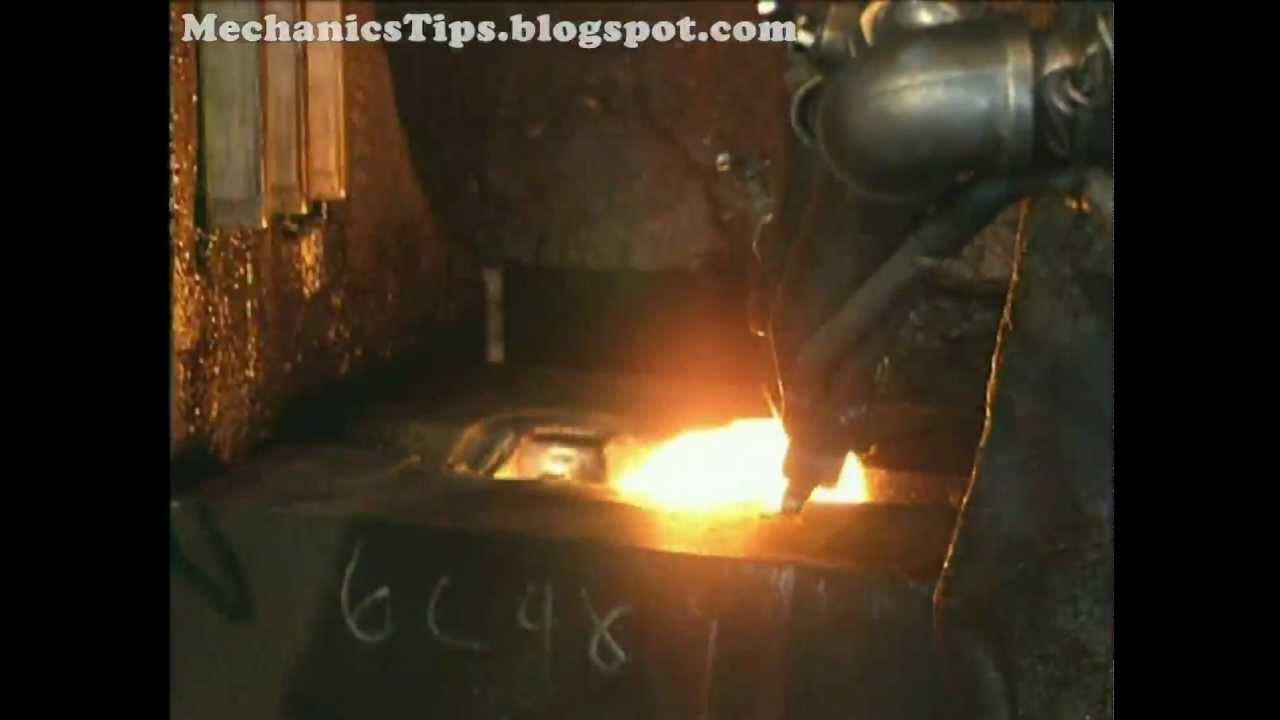Open die forging
Summary
TLDROpen die forging is a metal shaping process where force is applied to a workpiece on a stationary anvil, allowing for lateral movement. Unlike closed die forging, the dies do not enclose the piece, making it versatile for larger workpieces and customized shapes. This method refines the metal's grain, improving strength, wear resistance, and reducing porosity. While steel and alloys are common materials, metals like copper and titanium can also be forged. Though it requires skilled operation or complex controls, open die forging is ideal for both simple and complex shapes, including components like discs, shafts, and crane hooks.
Takeaways
- 😀 Open die forging involves shaping metal through the application of force, where a hammer strikes and deforms the workpiece placed on a stationary anvil.
- 😀 The dies in open die forging are not enclosed, allowing the workpiece to flow in the areas that are not in contact with the dies.
- 😀 Open die forging requires the operator to position and orient the workpiece to achieve the desired shape, unlike closed die forging.
- 😀 The dies used in open die forging are typically flat but can have specialized surfaces for specific operations like forming holes or cutting.
- 😀 This forging method is crucial for shaping large pieces of metal, including heavy components that can weigh up to 36 metric tons and be over 80 feet in length.
- 😀 Common shapes produced via open die forging include discs, hubs, blocks, shafts, cylinders, and custom shapes for specific applications.
- 😀 Open die forging is especially useful for short production runs, art smithing, and custom work, allowing for both rough and finishing shaping.
- 😀 The forging process realigns and refines the metal's grain, increasing strength and reducing porosity, which enhances the material's properties.
- 😀 Forged metal parts have superior wear resistance, mechanical properties, and fatigue resistance compared to cast or machined parts.
- 😀 Techniques like cogging, edging, and fullering are used in open die forging to shape raw material to proper thickness and prepare it for further processing.
Q & A
What is open die forging?
-Open die forging is a metal shaping process in which a hammer strikes and deforms a workpiece placed on a stationary anvil. The dies used in this process do not completely enclose the workpiece, allowing it to flow only where it is in contact with the dies.
What distinguishes open die forging from closed die forging?
-The key difference is that in open die forging, the workpiece is not enclosed by the dies, whereas in closed die forging, the workpiece is fully enclosed by the dies. Open die forging is more flexible and allows for larger pieces and more custom shapes.
What are some common applications of open die forging?
-Open die forging is used in manufacturing a wide range of metal parts, particularly those made from steel and steel alloys. These include discs, hubs, blocks, shafts, cylinders, flats, hexes, and custom shapes. It is also used for art smithing and custom work.
What metals are commonly used in open die forging?
-Steel and steel alloys are the most commonly used metals in open die forging. However, other metals like copper, nickel, and titanium alloys can also be shaped using this process.
How does open die forging improve the mechanical properties of metal?
-Open die forging refines the metal's grain structure, which increases strength, reduces porosity (air bubbles), and improves fatigue resistance. It also makes the metal more responsive to machining and enhances wear resistance.
What is the role of grain flow in open die forging?
-The forging process aligns and refines the grain of the metal, which increases strength and creates a continuous grain flow. This results in a finer grain size and greater strength of the finished product.
What is cogging, and how is it related to open die forging?
-Cogging is a process used in open die forging to deform a bar along its length, working it to the proper thickness. This is typically achieved using an open die drop forge and is a crucial step before further shaping processes.
What is the difference between edging and fullering in open die forging?
-Edging concentrates material at the ends of a workpiece using a concave-shaped die, while fullering thins out sections of the workpiece using a convex-shaped die. Both processes are essential for preparing a workpiece for further forging.
What are some challenges associated with open die forging?
-One of the main challenges of open die forging is the need for constant movement of the workpiece during the process. This requires either complex mechanical controls or skilled human operators, whereas closed die forging can often be fully automated.
What are the benefits of open die forging for large workpieces?
-Open die forging allows for the forging of very large workpieces, some of which can weigh up to 36 metric tons and measure over 80 feet (24.4 meters) in length. This flexibility in size is one of the advantages of open die forging over other techniques.
Outlines

This section is available to paid users only. Please upgrade to access this part.
Upgrade NowMindmap

This section is available to paid users only. Please upgrade to access this part.
Upgrade NowKeywords

This section is available to paid users only. Please upgrade to access this part.
Upgrade NowHighlights

This section is available to paid users only. Please upgrade to access this part.
Upgrade NowTranscripts

This section is available to paid users only. Please upgrade to access this part.
Upgrade NowBrowse More Related Video

Die forging process(open and closed die)

Telecurso 2000 - Processos de Fabricação - 09 Casa de ferreiro, espeto de aço

Materiais e Processos de Fabricação para Engenharia de Produção - Processo de forjamento

Teknik Pembentukan Logam (Forging)

Chamfering on the Lathe

CARA MENGENOLKAN BENDA KERJA MESIN FRAIS || TUGAS PSAJ BAHASA INDONESIA
5.0 / 5 (0 votes)